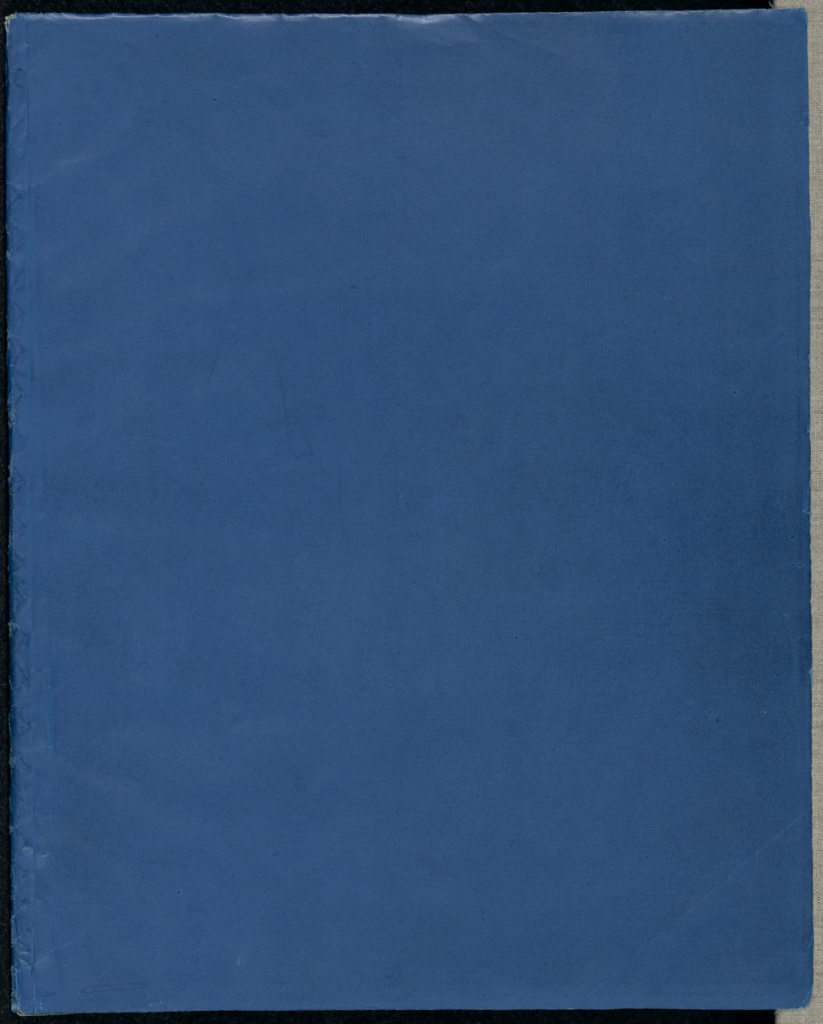Anna Atkins’s passion for botany provided the core impetus for her remarkable book Photographs of British Algae: Cyanotype Impressions, which she privately published in approximately twelve installments issued between 1843 and 1853. British Algae is recognized as the first book of photographs. Atkins sought to create an unofficial illustrated companion to the Manual of British Algae (1841) by the Irish botanist, William Henry Harvey*.* Instead of the traditional pen, ink, and watercolor botanical illustrations translated into engravings for publication, Atkins chose to employ the nascent cyanotype process. This proved key to the visual impact of her book. Sir John Herschel (1792-1871), a confidant of William Henry Fox Talbot and scientific colleague of Atkins’s father, John George Children (1777-1852), had invented the process. He presented his discovery to the Royal Academy on June 16, 1842 and soon after sent his newly-published paper to John Children giving Atkins early access to this new process.
In the preface to the first installment of British Algae, Atkins wrote: “The difficulty making accurate drawings of objects as minute as many of the Algae and Conferva, has induced me to avail myself of Sir John Herschel’s beautiful process of Cyanotype to obtain impressions of the plants themselves, which I have much pleasure in offering to my botanical friends.” Herschel’s process had the advantage of being one of the relatively easier and inexpensive early photographic methods. It turned out to be one of the most permanent processes as well. A cyanotype—a type of photogram—is made by laying the subject material directly on top of a regular piece of writing paper (British Whatman Turkey Mill paper in Atkins’s case) that has been coated with iron salts of ferric ammonium citrate and potassium ferricyanide. Atkins most likely then sandwiched her sensitized sheet and plant specimen between a piece of glass and a thin sheet of wood within the confines of a wooden printing frame.1 The entire package is placed out in the sun for five to fifteen minutes. The exposed parts of the paper turn a stunning Prussian blue while the parts covered by the specimen remain white. Atkins quickly mastered this process and took full advantage of its vibrant sea-like blue background to highlight the intricate characteristics of British algae specimens that she and her friends had collected and carefully pressed. She did follow the conventions of botanic illustration by arranging the plants on the page root down, but, within those parameters, she found ways to creatively lay out the actual specimens, curving them or extending them so that they fit on the page.
British Algae was made entirely using the cameraless cyanotype process; this includes not only the images of water plants, but also the title pages, text pages, name plates for each specimen, and the front and back wrappers. The textual elements were contact prints of Atkins’s own handwritten pages that had been oiled so they were translucent and could serve as negatives. Atkins was most likely assisted by her servants and, in the later years, by her dear friend Anne Dixon in this monumental production of thousands of cyanotypes.
Atkins sent each installment of British Algae unbound and wrapped in the cyanotyped blue paper to her “botanical friends,” individuals and institutions who shared an interest in botany and photography. Fortunate recipients included Talbot, Herschel, Robert Hunt (1807-1887), the Royal Society, the Linnean Society of London, the British Museum and Library, and the Museum of the History of Science, Oxford. Because recipients were expected to bind the volumes themselves and because Atkins issued some replacement images along the way, the number of images varies among the different copies. Some sets have more than 400 plates. The J. Paul Getty Museum owns a “complete” set of one installment—Part VII—of British Algae. According to Larry Schaaf in Sun Gardens: Cyanotypes by Anna Atkins this set of twelve plates with a table of contents may originally have come from Talbot’s copy or it may have been separated from the otherwise complete Linnean Society copy. It is also possible that it may represent a portion of another previously unknown copy.2
- Carolyn Peter, J. Paul Getty Museum, Department of Photographs
For more information about the artist and this work,
see:
- Armstrong, Carol. “Cameraless: From Natural Illustrations and Nature Prints to Manual and Photogenic Drawings and Other Botanographs,” in Carol Armstrong and Catherine de Zegher. Ocean Flowers: Impressions from Nature. Princeton, New Jersey: Princeton University Press, 2004.
- Saska, Hope. “Anna Atkins: Photographs British Algae.” Bulletin of the Detroit Institute of Arts, Vol. 84, No. 1/4, PHOTOGRAPHY (2010): 8-15.
- Schaaf, Larry. Sun Gardens: Cyanotypes by Anna Atkins. New York: The New York Public Library, 2018.
